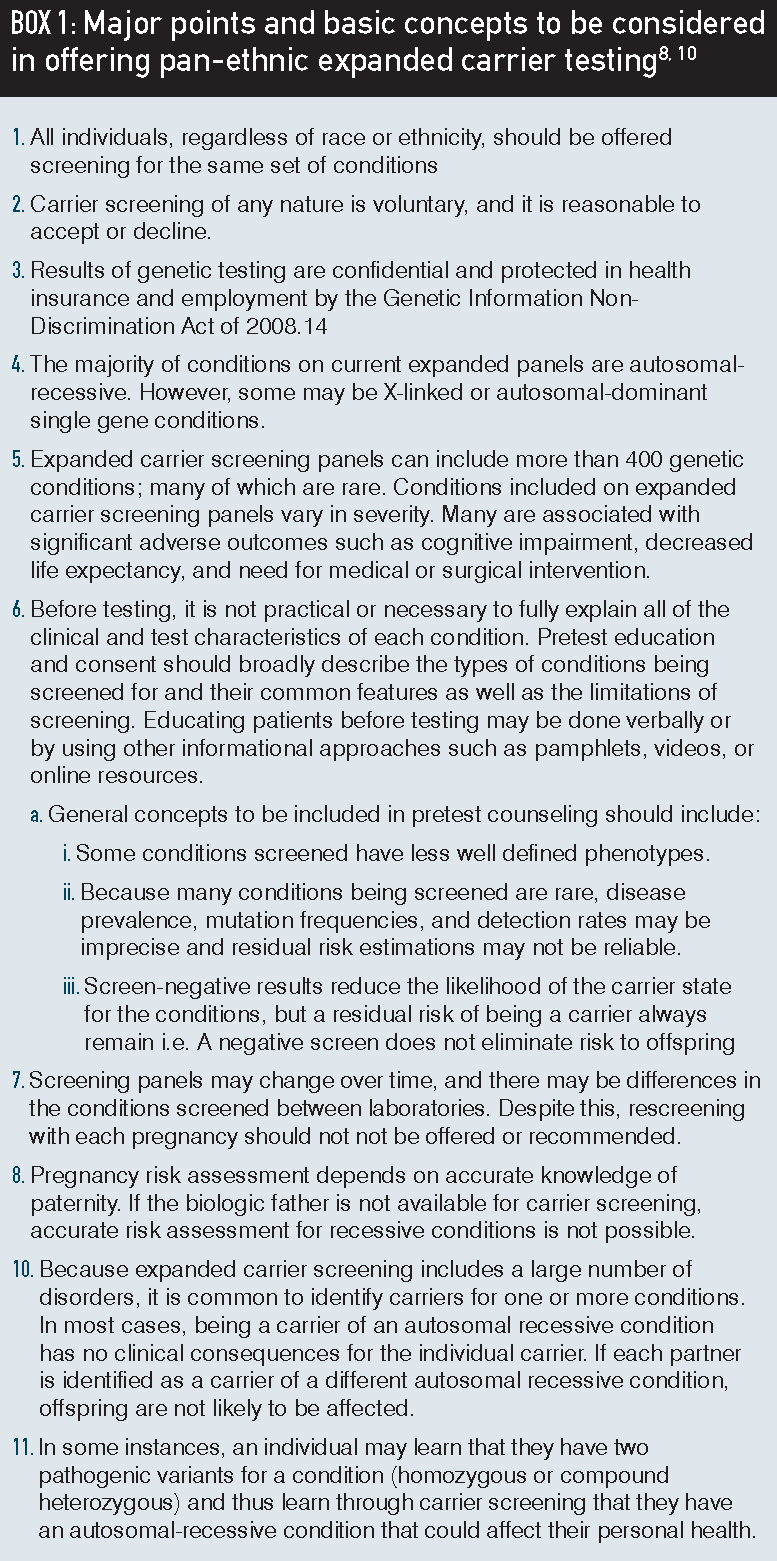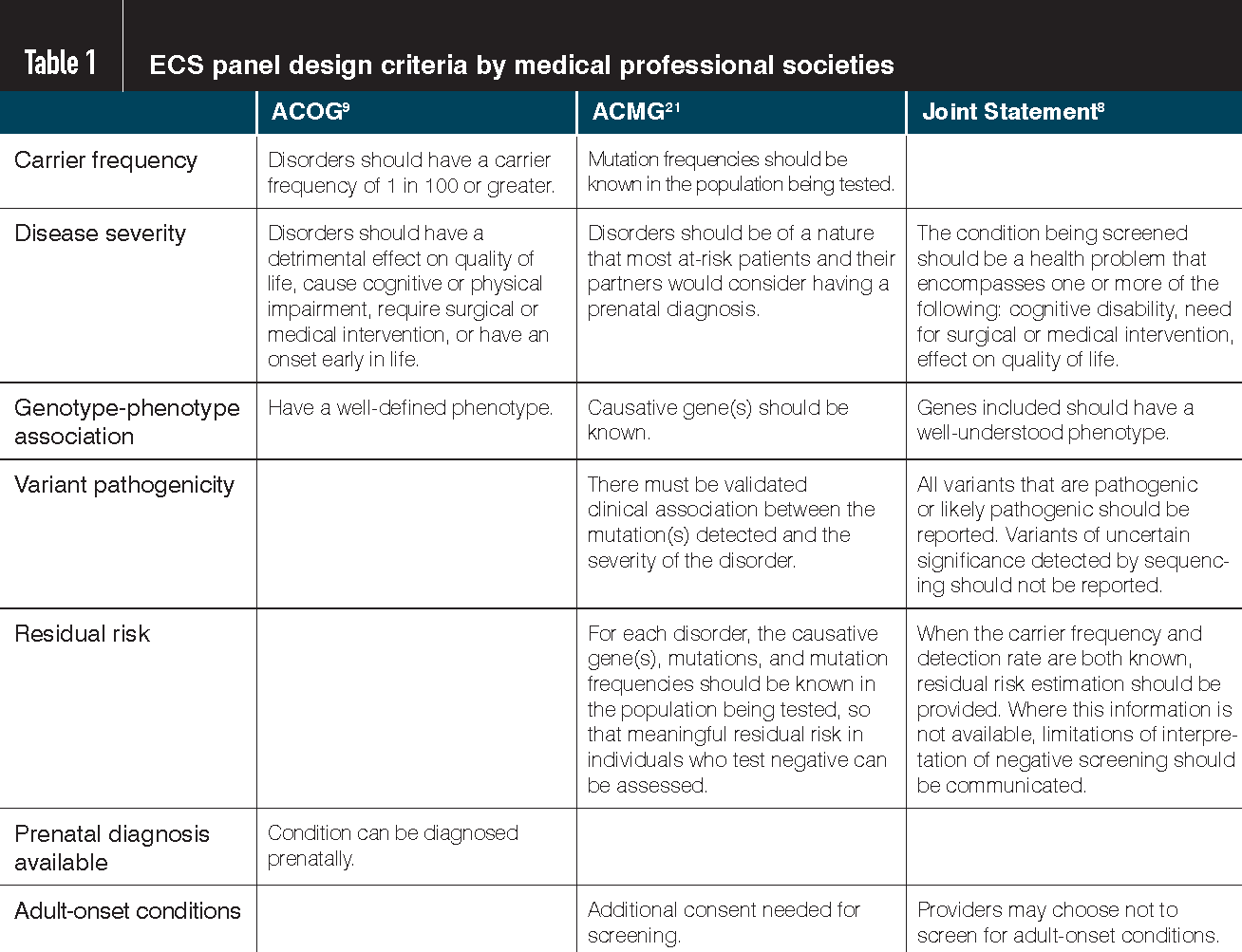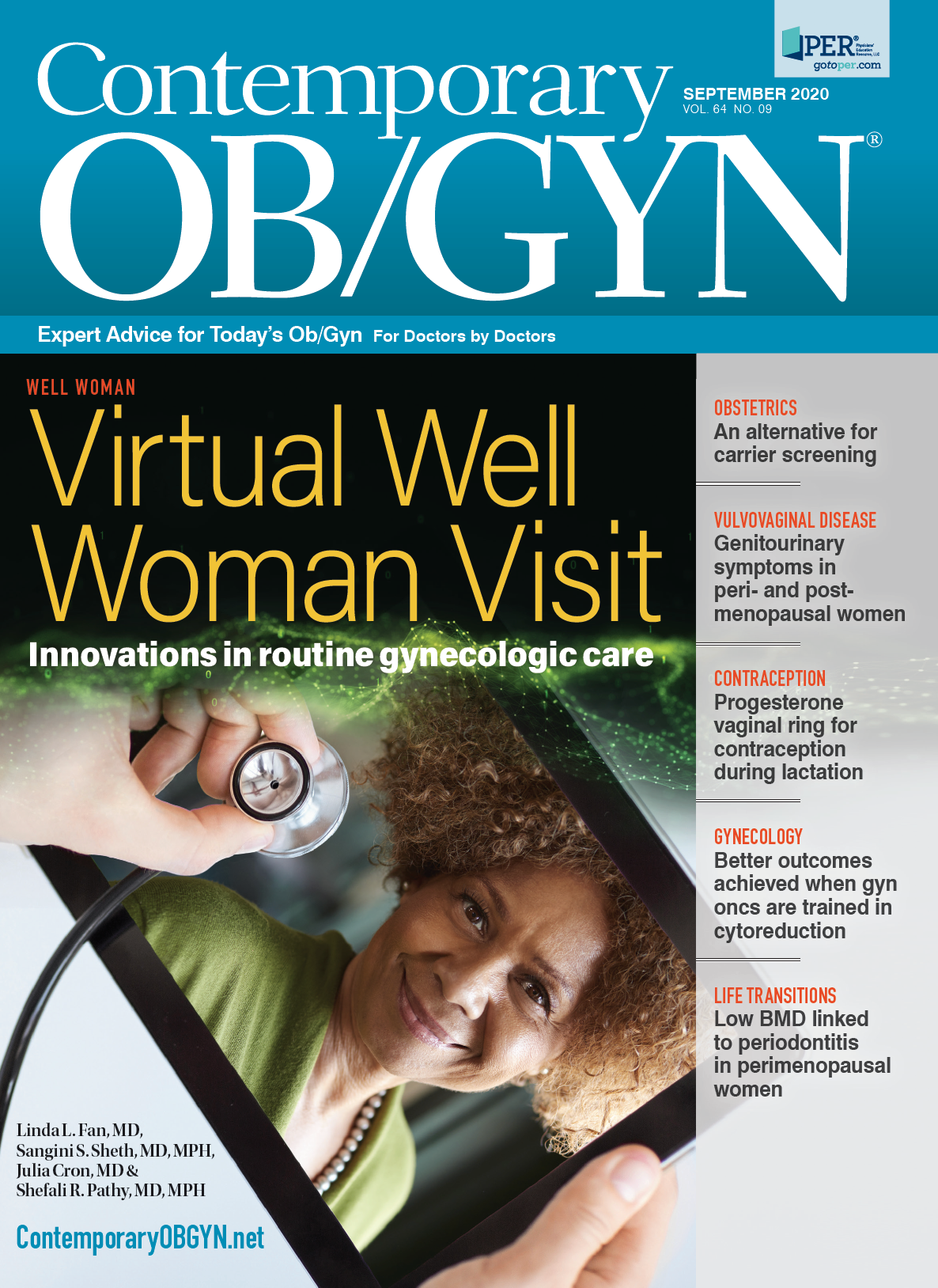A case for improved carrier screening
Expanded carrier screening addresses limitations in historical ethnic-based screenings, including potential racial and ethnic bias.
Introduction
Driven by the cost-effective introduction of next-generation sequencing, prenatal screening for fetal genetic disease has dramatically expanded. Although noninvasive prenatal testing (NIPT) for the common aneuploides (trisomy 21, 18 and 13) has had the greatest uptake and gained the most attention, fetal Mendelian disorders actually affect more pregnancies.
For example, trisomy 21 occurs in approximately 1 in 750 live births, trisomy 18 in 1 in 5500, and trisomy 13 even less frequently. Alternatively, autosomal recessive and X linked disorders are each individually rare but collectively occur in up to 1/175 pregnancies.1
Severe or profound Mendelian disease is predicted to occur in 1 in 545 pregnancies.2 These disorders also have public health importance as they account for 20% of pediatric hospitalizations and 18% of pediatric deaths.3
Until recently, screening approaches to identify pregnancies at risk for Mendelian disorders was based on parental race or ethnicity. Notable examples of this are Tay Sachs disease in the Ashkenazy Jewish community, Sickle Cell Disease in the African American Population, and beta thalassemia in the Mediterranean population.
This approach underwent expansion in 2001 when both the American College of Obstetricians and Gynecologists (ACOG) and the American College of Medical Genetics (ACMG) recommended that cystic fibrosis carrier screening be “offered” to non-Hispanic European Americans, for whom the carrier rate was approximately 1 in 25 and the detection rate was greater than 85%.
This approach proved to be difficult to implement in busy obstetric practices and in 2005 the guidelines were updated suggesting that all couples, regardless of race or ethnicity, underwent screening for cystic fibrosis even though the carrier risk and detection rate in some populations may be lower.4
Carrier screening for spinal muscular atrophy, which occurs in 1 in 10,000 pregnancies and has a carrier rate of 1 in 50, was recommended in 2009 by ACMG for all racial and ethnic groups owing to the severe characteristics of the disease and the advocacy of affected families.5
Introduction of Expanded Carrier Screening (ECS) Panels
Simultaneously, the practical and ethical limitations of ethnicity-driven carrier screening were being challenged. Demographic data from the United States Census found increasing populations of multiracial children and couples. Similarly, many individuals have limited or incorrect knowledge of their ethnic ancestry.3
For example, 40% of US individuals age 18-64 are unable to indicate the ethnicity of their four grandparents.
These limitations of ethnic-based screening were confirmed in 2013, when a large scale study evaluating the feasibility of screening for a large number of genetic variants and genes without consideration of the patient’s ethnicity or race (pan ethnic ECS) found that up to one in four individuals were carriers for at least one of approximately 100 recessive diseases.
Most importantly, approximately three-fourths of these carriers would not have been detected by the suggested ACOG or ACMG guidelines.1 It was also of concern that the existing guidelines had significant ethnic and racial bias in carrier detection when compared to screening with a pan-ethnic expanded panel.6
For example, compared to pan-ethnic screening, screening using the recommended ACOG guidelines identified a carrier in only 35% of northern Europeans who were found to be carriers on the extended carrier panel, 21% of Hispanics and only 6% of East Asians. A large part of this disparity was accounted for by differences in the frequency of specific disease-causing genes and variants in various populations.7
Introduction of ECS into clinical practice
With the development of cost-effective genomic technologies and spurred by recognition that expanding carrier screening could identify more carriers and narrow the equity gap inherent in ethnic-based screening, pan-ethnic ECS began to be offered to clinicians.
Initially, genotyping techniques were used in which a select number of known variants were analyzed. Although much improved over ethnic-based screening in which only a few genes were tested, genotyping was limited at both the individual and population level, i.e. when only looking at a limited list of targeted variants, diseases with multiple disease-causing variants such as cystic fibrosis are detected with variable success in different ancestries.
Next-generation high-throughput sequencing solves this problem and has now replaced genotyping in most labs and has significantly expanded detection of disease variants. For example, full-exon sequencing of 50 of the most common variants yields a 1.5- to 2-fold increase in detection rates over simple genotyping.2
Initially, ECS was introduced into practice by industry as a lab-developed test that did not require extensive FDA scrutiny, premarket review or oversite. At the time there were no guidelines by academic thought leaders, consensus with practitioners, nor patient and community engagement.
In an attempt to have the clinical community “catch up”, in March of 2015 a Joint Statement of the Perinatal Quality Foundation, ACMG, ACOG, the Society for Maternal-Fetal Medicine (SMFM), and the National Society of Genetic Counselors published “points to consider” when performing ECS in reproductive medicine.8
Box 1: Major points and basic concepts to be considered in offering panethnic expanded carrier testing

Most recently in 2017, ACOG issued a committee opinion9, which for the first time suggested that ECS was an appropriate alternative to standard ethnic-based screening and suggested that each individual practice should choose either standard screening based on ethnicity plus cystic fibrosis and spinal muscular atrophy or expanded screening for all of their patients.
In comparing the two acceptable approaches, a practice should consider that the present ethnic-based approach will identify only approximately 30% of the disorders identified on an extended carrier panel of approximately 100 disorders. In addition, an ethnic-based approach has an inherent racial and ethnic bias in carrier identification.
Process of Carrier Screening
The basic concepts involved in an ECS program are outlined in Box 1.8 Ideally, women of reproductive age would be offered carrier screening before conception to maximize the subsequent reproductive options for carrier couples. Unfortunately, at present, this is only done rarely and most women are tested once pregnant.
All women who have not been previously screened should be offered screening at the first prenatal visit with decisions regarding sequential testing in which the mother is tested initially and the father only tested if the mother is a carrier or concurrent simultaneous couple screening dependent on gestational age, availability of the partner, local program structure, and patient preferences.
Although in most cases screening results are returned within approximately one week, on rare occasions results may take longer. For example, discovery of a variant of uncertain significance may take evaluation of other family members to determine its clinical significance when the partner carries a known variant in the same gene.
As opposed to expanded screening panels, patients with a known family history of a Mendelian condition should have genetic counseling to identify the familial variant and ensure that the appropriate carrier test is performed.
Pre-test counseling
It is not possible or necessary to counsel every patient about the individual disorders included on an expanded screen but they should be provided with pre-test education that describes the screening process and gives them an overview of the severity of the disorders.
The major points to be considered in pretest counseling and education are outlined in Box 1.10 This information may be provided by the clinician, their trained staff, or by informational resources recommended by their provider.
Unfortunately, a survey of ob/gyns revealed that only one-third felt comfortable providing pre-test counseling and fewer felt comfortable explaining the results of expanded panels.11
Patient education should include a discussion of residual risk i.e. a negative screening test significantly decreases, but does not completely rule out, the possibility of an affected child with a specific disorder since the test may only evaluate known variants of a particular gene.
Although sequencing has decreased the residual risk, it is still not 100%. Likewise, screening does not evaluate all disease-causing genes. For example, if a patient of Ashkenazy Jewish descent with a pretest carrier risk of 1 in 25 undergoes cystic fibrosis screening with a detection rate of 94%, her carrier risk after a negative screen is reduced to 1 in 380. Additional details and examples of residual risk are discussed in the ACOG Committee Opinion No. 691.12
Laboratories will report the residual risk for genes on their panels and if not known, this will be indicated. The residual risk may vary by ethnic groups since the frequency of known variants and their detection rates will vary.
Panels testing for a large number of disorders will invariably include some that are extremely rare in which knowledge of disease-causing variants is limited and hence calculation of the residual risk less precise.
Patients should be informed that more than 1 in 4 individuals will be a carrier of at least one disorder included on the ECS3 and that the carrier state almost never poses health risks.
Exceptions to this are carriers for Gaucher disease who have an increased risk of Parkinson disease and pre-mutation carriers of the Fragile X Syndrome. For some X linked disorders, such as Duchenne Muscular Dystrophy, some female carries will have mild symptoms of the disease because of skewed X inactivation.
Selection of conditions for inclusion on ECS panels
Despite the increasing use of ECS over the last 5 years, no general consensus exists on which and how many conditions to include nor on appropriate clinical implementation. That carrier screening should focus on diseases of significant clinical impact such as those that cause pediatric mortality and/or intellectual disability is generally accepted.
Similarly, disorders in which immediate neonatal care may be altered by the diagnosis should be included. Severity-related criteria for inclusion of other conditions should maximize the clinical utility of ECS and include disease characteristics that at-risk couples would reasonably act to avoid in their offspring.
For example, ACOG cites cognitive and physical impairment, detrimental effect on quality of life, an onset early in life, and a requirement for surgical or medical intervention as characteristics that describe a severe phenotype.9
Contemporary guidelines do not recommend specific conditions to be included in ECS (beyond recommending pan-ethnic cystic fibrosis and spinal muscular atrophy screening), instead suggesting general principles for ECS panel design (see Table 1).
This has led to ECS offerings being widely variable in number and scope among laboratories, ranging in size from dozens to hundreds of conditions. A 2018 study comparing panels offered at 16 laboratories found that panels ranged from 41 to 1,792 conditions, with only three conditions in common among all panels analyzed.13
In addition, some of the more frequent diseases with non-conventional molecular findings such as spinal muscular atrophy, fragile X syndrome, and congenital adrenal hyperplasia, are not routinely included in all panels.14
The use of population carrier frequency as a criteria for inclusion on a panel has been suggested to provide a balance between identifying a large proportion of at-risk couples without identifying a large number of carriers for ultra-rare conditions in which partners are extremely unlikely to be carriers.
ACOG has recommended that a disorder should “have a carrier frequency of 1 in 100 or greater.” It is unclear, however, whether that includes conditions with a 1 in 100 carrier frequency in any ethnicity, in a US-weighted population, or in all ethnicities.15
This differentiator is important since if it requires a 1 in 100 carrier frequency in all ethnicities, a compliant panel would include only three conditions and overall identify only approximately 45% carrier couples relative to a 176-condition panel.15
Alternatively, a 1 in 100 carrier frequency in any ethnicity, would include 38 conditions and identify approximately 89% of at-risk couples.15 Although ACOG does not explicitly state it, it seems likely that it intended for the criterion to be in any ethnicity, since some of the example conditions cited as reasons to consider for ECS have carrier frequencies greater than 1 in 100 in some ethnicities, but less than 1 in 100 in others.9
Table 1: ECS panel design criteria by medical professional societies

There is a common misconception that as panels become larger the number of patients screening positive will linearly increase increasing a burden on genetic counseling and the health care system.15,16
However, this is not the case. A disorder with a lower carrier frequency will result in a smaller number of positive results so that as rarer conditions are added to panels the increase in the number of positive results will begin to plateau. For example, a panel with the 18 most prevalent conditions typically screened for would identify about 84% of at-risk couples, and the addition of the 73 next most-prevalent conditions would increase identification of at-risk couples by only another 11%, to approximately 95%.15
Despite cautious selection of genes for screening panels, on occasion the phenotype for a variant identified on screening will be uncertain; especially for a rare variant or one in an ethnic or racial group in which the variant is rarely seen.
As opposed to diagnostic molecular testing in which a fetus has already demonstrated anomalies, carrier screening is designed to identify potential disorders in those that appear unaffected.
Although the criteria set forth by ACOG, ACMG, and other professional societies provide guidance on panel design, they are broad and leave room for interpretation by laboratories designing ECS panels. Laboratories should be encouraged to publish their criteria for choosing the conditions offered on their ECS panels. Likewise, clinicians should use these criteria in choosing the panel appropriate for their patients.
Post-test counseling of pregnant carrier couples
In approximately 1.7 % to 2.5 % of screened couples, both members will be identified as carrying a pathogenic variant in the same gene giving them a 1 in 4 chance of having an affected pregnancy.7,15,16
In such cases, referral to a trained genetic counselor or clinical geneticist familiar with prenatal diagnosis is strongly recommended. The counseling session should include a detailed discussion of the fetal, infant, child, and adult phenotype including the impact of incomplete penetrance and variable expressivity. The medical and psychosocial implications of having an affected child should be frankly discussed.
Reading material designed for parents should be provided and the significance of this information for other family members (e.g., parents or siblings) should be mentioned and family counseling at a later date offered.
Prenatal management, delivery planning, and coordination of care for the child as well as pregnancy termination or adoption planning should be discussed. When appropriate, the session should also include a discussion of the availability, safety, and techniques involved in pregnancy termination. If the genetic practitioner is uncomfortable discussing pregnancy termination, the patient should be referred.
The methods and risks involved in prenatal diagnosis should be outlined. If the patient is in the first trimester and pregnancy termination is an option for the couple, first trimester CVS is the diagnostic procedure of choice because of the high a-prioi risk of an affected pregnancy.
Although previous concerns existed for using chorionic villi for specific inherited disorders this is no longer the case. It’s important to note that not all labs perform prenatal testing for all disorders on expanded carrier tests requiring the clinical team to identify an appropriate laboratory prior to the procedure. The specific variant must be submitted to the lab17 and most labs will request a sample of blood from each parent to serve as a positive control.
Present data suggest that if performed by an experienced physician, the risk of either a transabdominal or transcervical CVS leading to miscarriage is less than 1 in 600 to 1000 pregnancies.18 For patients requiring prenatal diagnosis in the second trimester, amniocentesis can be performed. Pregnancy loss rates from amniocentesis are similar to those with CVS; approximately 1:1000.18As with CVS, pre-procedure communication with the molecular lab is important.
Reproductive Options for Carrier Couples Identified Before Pregnancy
When surveyed, the majority of ob/gyn providers believed that expanded panels should be offered pre-conception as part of family planning.11 It is unfortunate that the majority are not.
Screening performed before a couple is pregnant allows the prevention of an affected pregnancy. These options include in vitro fertilization (IVF) with preimplantation genetic testing for monogenic conditions (PGT-M), use of a non-carrier donor gamete, adoption, or avoidance of pregnancy. Among couples identified as at-risk before pregnancy, more than three-quarters reported that they had undertaken or planned to undertake one of these options.19
Historically, PCR-based methods had been widely used for PGT-M; however, these methods suffered from allele drop out, resulting in misdiagnosis. To avoid this, lineage analysis using polymorphic markers (usually short tandem repeats) close to the gene of interest was required, taking months of work by highly skilled scientists.
Most recently, karyo-mapping using a single nucleotide polymorphism array of approximately 300,000 genome-wide SNPs has been developed to facilitate the rapid identification of informative markers. In most instances this approach increases the number of informative markers to an average of approximately 70 SNPs in the window around the gene of interest, significantly shortening pretest preparation to a few weeks.20
__
Author Biography

Dr. Ronald J. Wapner is the vice chair of research in the department of obstetrics and gynecology for Columbia University Irving Medical Center in New York and its director of reproductive genetics. His areas of expertise are fetal testing, fetal anomalies, genetic testing, and preterm birth prevention.
__
References
- Westemeyer M, Saucier J, Wallace J, et al. Clinical experience with carrier screening in a general population: support for a comprehensive pan-ethnic approach. Genet Med. 2020.
- Beauchamp KA, Muzzey D, Wong KK, et al. Systematic design and comparison of expanded carrier screening panels. Genet Med. 2018;20(1):55-63.
- Lazarin GA, Haque IS, Nazareth S, et al. An empirical estimate of carrier frequencies for 400+ causal Mendelian variants: results from an ethnically diverse clinical sample of 23,453 individuals. Genet Med. 2013;15(3):178-186.
- Watson MS, Cutting GR, Desnick RJ, et al. Cystic fibrosis population carrier screening: 2004 revision of American College of Medical Genetics mutation panel. Genet Med. 2004;6(5):387-391.
- Prior TW. Carrier screening for spinal muscular atrophy. Genet Med. 2008;10(11):840-842.
- Haque IS, Lazarin GA, Kang HP, Evans EA, Goldberg JD, Wapner RJ. Modeled Fetal Risk of Genetic Diseases Identified by Expanded Carrier Screening. Jama. 2016;316(7):734-742.
- Haque IS, Lazarin GA, Wapner RJ. Prenatal Carrier Screening. Jama. 2016;316(24):2675-2676.
- Edwards JG, Feldman G, Goldberg J, et al. Expanded carrier screening in reproductive medicine-points to consider: a joint statement of the American College of Medical Genetics and Genomics, American College of Obstetricians and Gynecologists, National Society of Genetic Counselors, Perinatal Quality Foundation, and Society for Maternal-Fetal Medicine. Obstet Gynecol. 2015;125(3):653-662.
- American College of Obstetricians and Gynecologists Committee on Genetics. Committee Opinion No. 690: Carrier Screening in the Age of Genomic Medicine. Obstet Gynecol. 2017;129(3):e35-e40.
- Benn P, Chapman AR, Erickson K, et al. Obstetricians and gynecologists' practice and opinions of expanded carrier testing and noninvasive prenatal testing. Prenat Diagn. 2014;34(2):145-152.
- Holton AE, Canary HE, Wong B. Business and Breakthrough: Framing (Expanded) Genetic Carrier Screening for the Public. Health Commun. 2017;32(9):1051-1058.
- Committee Opinion No. 691: Carrier Screening for Genetic Conditions. Obstet Gynecol. 2017;129(3):e41-e55.
- Chokoshvili D, Vears D, Borry P. Expanded carrier screening for monogenic disorders: where are we now? Prenat Diagn. 2018;38(1):59-66.
- Hogan GJ, Vysotskaia VS, Beauchamp KA, et al. Validation of an Expanded Carrier Screen that Optimizes Sensitivity via Full-Exon Sequencing and Panel-wide Copy Number Variant Identification. Clin Chem. 2018;64(7):1063-1073.
- Ben-Shachar R, Svenson A, Goldberg JD, Muzzey D. A data-driven evaluation of the size and content of expanded carrier screening panels. Genet Med. 2019;21(9):1931-1939.
- Guo MH, Gregg AR. Estimating yields of prenatal carrier screening and implications for design of expanded carrier screening panels. Genet Med. 2019;21(9):1940-1947.
- Scacheri C, Redman JB, Pike-Buchanan L, Steenblock K. Molecular testing: improving patient care through partnering with laboratory genetic counselors. Genetics in Medicine. 2008;10(5):337-342.
- Ogilvie CM, Akolekar R. Procedure-related pregnancy loss following invasive prenatal sampling: time for a new approach to risk assessment and counseling. Expert Review of Obstetrics & Gynecology. 2013;8(2):135-142.
- Johansen Taber KA, Beauchamp KA, Lazarin GA, Muzzey D, Arjunan A, Goldberg JD. Clinical utility of expanded carrier screening: results-guided actionability and outcomes. Genet Med. 2019;21(5):1041-1048.
- Gould RL, Griffin DK. Karyomapping and how is it improving preimplantation genetics? Expert Rev Mol Diagn. 2017;17(6):611-621.
- Grody WW, Thompson BH, Gregg AR, et al. ACMG position statement on prenatal/preconception expanded carrier screening. Genet Med. 2013;15(6):482-483.

S4E1: New RNA platform can predict pregnancy complications
February 11th 2022In this episode of Pap Talk, Contemporary OB/GYN® sat down with Maneesh Jain, CEO of Mirvie, and Michal Elovitz, MD, chief medical advisor at Mirvie, a new RNA platform that is able to predict pregnancy complications by revealing the biology of each pregnancy. They discussed recently published data regarding the platform's ability to predict preeclampsia and preterm birth.
Listen
